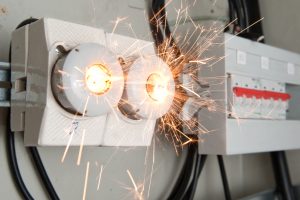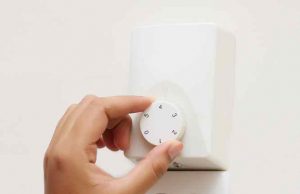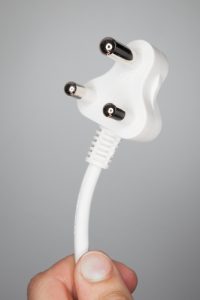Why is RCCB necessary for your house?
It was in 2013, during the IPL times, if we remember it correctly, when an interesting commercial surfaced for the first time, featuring a patient being taken for a ‘shock therapy’ by the group of doctors in a mental institution. While trying to administer the shock, one of the doctors got a shock himself triggering some kind of a cascading effect wherein the other doctors also received the shock. The patient, in the meanwhile, attempted to escape, eventually himself getting the shock when he tries to snatch his toy from one of the doctors. Then there was a dramatic twist in the storyline, when the doctor, as a result of the electric shock, became mentally unstable and hence patients in the same hospital while the patient, got cured by the shock and was now his doctor AND yes, there was a popular song throughout the commercial – shock laga laga shock laga!! The commercial used to end with the voice-over saying, “Shock lagega agar Havells MCB aur RCCB nahi lagaya toh”, meaning you will certainly get a shock if you do not use Havells MCBs and RCCBs.
This interesting commercial was directed for Havells by the noted film-maker, Anurag Basu. The electrical goods maker Havells was then creating a campaign to renew its proposition of providing a ‘shockproof’ life. This commercial vastly helped the brand in building a large consumer portfolio for its products such as MCBs and RCCBs, that were erstwhile considered complete B2B categories.
Though, depicted with great comic sense, the commercial was undoubtedly signifying an important message, related to the home safety against the dangers of electrocutions, short circuits and electrical fires, mainly caused due to faulty wiring or earth faults. Therefore, it is important for every one of us to understand what is RCCB and how will it help in ensuring electrical safety at our houses.
What is a RCCB?
Residual Current Circuit Breaker (RCCB) is a differential current sensing device used to protect a low voltage circuit in case of a leakage fault. It is sometimes also known as Residual Current Device (RCD). It contains a switch device that switches off (in a fraction of a second), whenever the current leaks out and does not return back through neutral. The RCCB provides protection from small current leakage arising due to accidental touch by human being or insulation failure, which is not possible by MCB or fuse alone.
Why RCCB when MCB is already provided?
There are two types of electrical faults that are quite dangerous:
- High current fault arising due to short current or low resistance fault and is protected by MCB.
- Earth leakage arising due to insulation failure of appliance/cable/socket or accidental touch by a human, etc. Since such low-level leakage cannot be detected by MCB and if no action is taken, it will result in damage to the appliance or fatal to the human being. It is here RCCB plays an important role in electric protection.
How does it function?
The underlying fundamental principle behind the functioning of RCCBs is that the current flowing into the equipment shall return back in full. If there is a difference of even a few mill-ampere, it will detect and trip the power supply. The current that leaks out of the system is called residual current. The RCCBs are designed in such a way that, they are capable to continuously sense and compare the difference i.e. the residual current values between the live and neutral wires. Any small change in the current value on account of such an event would trigger the RCCB to trip off the circuit. Thus, we can say the RCCBs sense the difference between current values in phase and neutral and breaks the circuit in case of an imbalance and hence provides -complete electrical protection along with MCB to human beings and the equipment.
In an RCCB, the ON and OFF positions are clearly visible with the help of window provided at the top of housing or the chamber. The ‘Green’ colour indicates the ‘OFF’ position, while the ‘Red’ colour indicates the ‘ON’ Position.
With advanced technology, some of the manufacturers have come out with integrated protection for short circuit as well as earth fault, and the device is called RCBO. In such a situation, MCB is not required. This will be discussed in a separate post.
Types of RCCBs
RCCB is manufactured in accordance with IS 12640 (part I): 2008 or IEC 61008-1 1996. For household application, there are 2 types of RCCBs available in the market:
- The 2 Pole RCCB: It is used in case of a single-phase supply that involves only a live and neutral wire. It contains two ends where the live and neutral wires are connected.
- 4 Pole RCCB: It is used in cases of a three-phase supply connection involving three-phase wires and a neutral. It consists of two ends where the three phases and neutral wire are connected.
In both these types of RCCBs, a Rotary switch is used to switch the RCCB back to ON or OFF positions. A test button is also provided to periodically test the RCCB functionality.
ELCB Vs RCCB
ELCB was the first development for detecting leaking current by measuring the voltage across earth resistance. This protection had major issues of reliability and erroneous tripping and did not succeed well. During that period, it was not possible to detect the leaking current and major cause of electrocution with shock common during monsoon, bathroom, etc. But the development of RCCB (also called RCD) has solved this problem. One should not only install RCCB in his house but ensure it is not isolated on finding frequent trippings and learn the technique of troubleshooting the cause in identifying the defect in the system causing RCCB tripping.
Will RCCB function if earth wire is disconnected
For some reasons if the earth wire is disconnected and insulation of live wire weakens in any appliance, the leaking current should pass through the earth wire; and if not, the charge will try to pass through the body of anyone who touches the appliance with instant shock. But the RCCB will immediately act to disconnect and the damage to the human body will only be a function of the sensitivity and tripping time of the RCCB.
Different Ratings of RCCBs
For your household requirement, 32-63A rated RCCB which can withstand this current when tripping caused by the leakage of 30-100 mA is the normal range to select the best for your house. 30 mA is very sensitive and you may encounter few tripping without any apparent fault. Type AC is for sinusoidal wave and meant for household usage. Generally, 60ma and 100 mA is installed in most of the houses providing a balance between no obvious fault and real fault. While selecting the rating, one should consult an electrician and should question his selection criteria based on the understanding given above.
How to troubleshoot RCCB trippings?
A repeat tripping by RCCB confirms that there is a fault in the house and it becomes a challenge to troubleshoot it at the earliest. Such tripping is generally without any MCB tripping. Kitchen appliance, plug/socket, geyser, mosquito repellent, etc. are likely cause. Therefore, isolate MCB feeding the kitchen and reset RCCB. If successful, then unplug the appliance one by one or remove all plug and insert plug one by one, reset RCCB and find out the plug, the unplugging of which holds the RCCB. If the kitchen is not the cause, then try one by one each MCB, plugging/unplugging of all appliance and will succeed in identifying the defective appliance. If you open the appliance or plug or socket, you will observe very minute defect and continuation would have resulted in heavy damage.
Conclusion
An RCCB is an essential protective device and a necessity in electrical safety for any house. A properly set RCCB will ensure that there is no fatal injury caused to the human being in case of an accidental touch to live wires. Therefore, if you are looking for proper protection for your house, just go to the market in any regular electrical store and ask for RCCB or RCD and they should be able to give you the same. Most popular brands are
Havells, ABB, Anchor, Legrand, L&T etc and since it is only a one-time installation, go for the reputed brand.
Never forget that electricity is your friend only with complete protection in place. Never apply any short cuts. And always consult your electrician for issues related to electricity.
Sources of Information:
- http://engineering.electrical-equipment.org/electrical-distribution/residual-current-circuit-breaker-rccb.html
- https://electricalnotes.wordpress.com/2011/03/20/mcbmccbelcbrccb/






